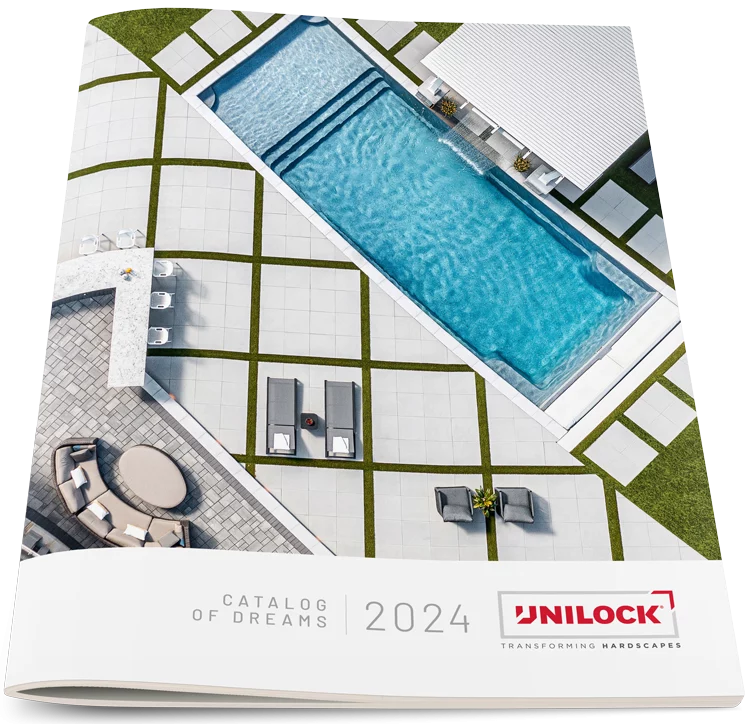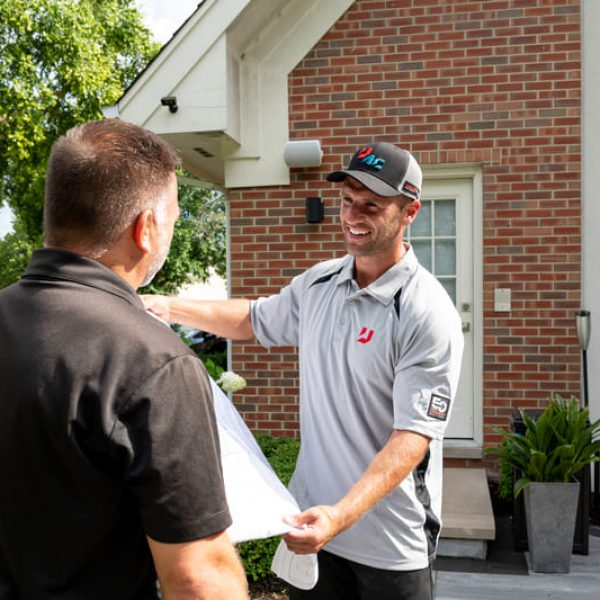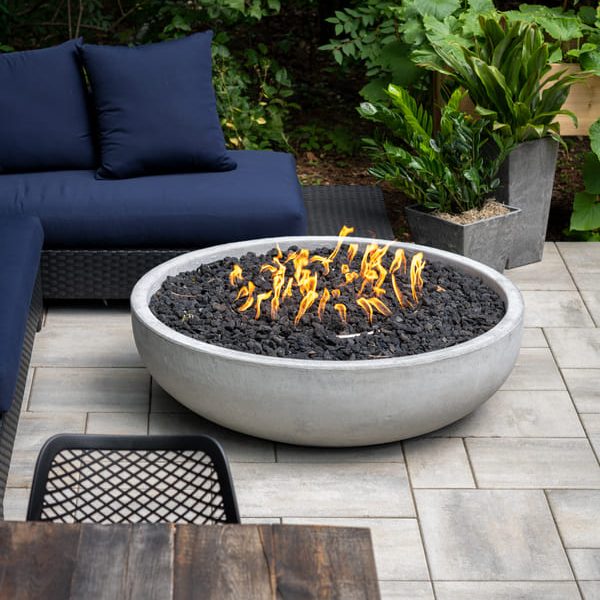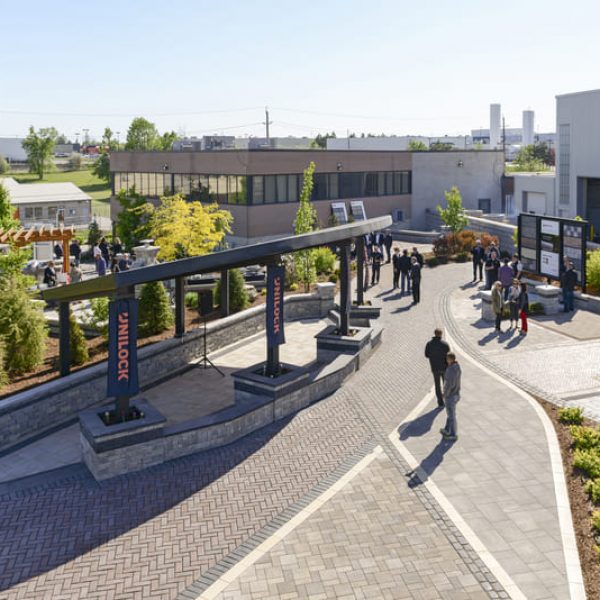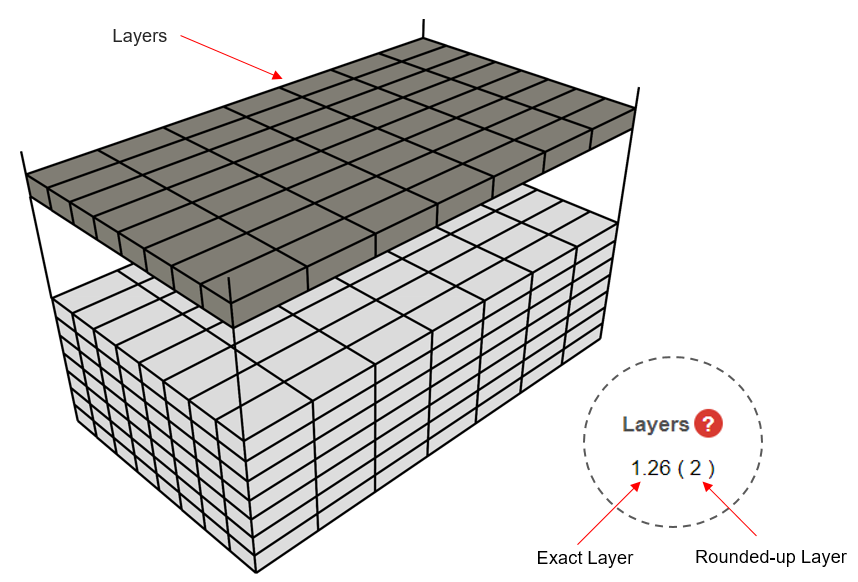
Every step of a landscape project involves decisions. By the time you wrap up the design phase of your outdoor living project, your landscape or architect will have looked to you dozens of times for your preference on everything from color, texture, layout, budgeting, and scheduling. When it comes to incorporating the timeless beauty of natural stone in patios and walkways, there will be an additional, somewhat deceptively simple, decision to make — which type of installation method is best. There are two options: The natural stone can be dry laid or wet laid. This either-or choice sounds easy enough, but each option has less obvious implications for your project’s cost, timeline, durability, and perhaps even that intangible charm that takes some projects from just really nice to truly special.
Wet or Dry — What’s the Difference?
The lay is all about what the pavers sit on, and how they’re joined together. Wet-lay is what typically comes to mind when we picture a stone patio. It results in a clean, smooth, stately look with an even surface and rigid mortar joints. This may be your choice if you prefer a classic or metropolitan look and feel. Dry-lay takes on a more country, casual style that aims for a more natural aesthetic.
Planned and installed correctly, a wet-laid installation can last for decades. Generally, the upside of wet-lay is that it’s a more durable and permanent installation, while the trade-off comes with its higher upfront cost and longer project durations, but it’s important to recognize that in some instances, wet-lay may be the only practical option. Depending on the terrain you’re installing over, or anticipated physical stresses and loads that your pavers will experience, the choice may be driven more by engineering concerns than aesthetic preference. Installing over an existing poured concrete pad, for instance, may dictate that wet-lay is the more viable option.
However, a dry-laid installation can open up your project to some inspiring design possibilities. This approach requires no concrete pad and no mortared jointing between pieces of stone. As a result, the labor, time, and cost involved are greatly reduced. The natural stone is laid on compacted layers of gravel rather than concrete, and the space in the joints can be filled with either traditional sand for a natural feel, or the more permanent, durable solution of polymeric sand or jointing compounds traditionally found in concrete paver installations.
For all the durability and expense of a wet-laid installation, dry laying can provide an enduring rustic charm along with a design flexibility that moves you closer to realizing your project’s vision. Whether that vision involves a sunny Tuscan veranda, a leafy patio aside a French vineyard, or a Sunday barbecue venue, a dry-laid approach allows you to be creative in the negative space, that gap between the pavers. There’s enormous design opportunity found in those small joints. Consider using gravel, grass, or your favorite traffic-resistant ground cover in between natural stone pieces in some areas of the landscape for space definition and visual interest. Here again your chosen filler will come with its own properties and challenges — some are more easily washed away, others inhibit weed growth (or not), and drainage properties vary. If you’re thinking about grass or ground cover between pavers, there are right ways and wrong ways to achieve the effect you want. A Unilock Authorized Contractor can help you decide as can research of similar landscape projects.
Maintenance Matters
Like any project, Mother Nature plays her part in maintenance costs as well. Depending on your area’s freeze-thaw cycle, there can be a tremendous amount of pressure applied to a paved surface. While dry-laid natural stone patios and walkways may experience more shifting and flexing than wet-laid, natural stone that is wet-laid is more susceptible to weather-induced cracking. Neither installation type is completely impervious to natural shifts in terrain based on the stresses of the seasons.
When heaving, cracking, or structural issues do occur, the remedies differ between wet and dry installations. Dry-laid pavers that become shifted can usually be resettled or aligned manually, with a relatively minor level of effort and expense. Cracked pieces of dry-laid natural stone are also more easily replaced, as they are not set in mortar and concrete. A wet-laid installation is almost always more difficult and expensive to repair. Contractors usually have strong opinions on which method is best based on their years of experience. Having the wet-lay vs. dry-lay conversation is important for sure, not just for budgetary reasons but also for maintenance concerns.
Drainage properties differ as well, but whether that matters depends a lot on your property conditions and secondary project goals. Unless you have ambitious plans to harvest rainwater or contain runoff within your property, the superior drainage properties of a dry-laid installation may not be a significant factor in your final decision. A properly pitched wet-lay surface will drain well enough to mitigate standing water or surface ice-formation issues.
The Deciding Factors
The installation method is just one of many decisions ahead of you — and it’s likely not near the top of your list. What’s more exciting is the color, size, and texture options of the natural stone you’ll choose for your landscape project! Fortunately, the beautiful Natural Stone by Unilockcan be used with either dry-laid or wet-laid installations.
Your Unilock Authorized Contractor’s experience with both installation types, in your climate, over your soil, is a ready source of invaluable insight. By arming yourself with a knowledge of the relevant trade-offs and possibilities for each installation type, you’re set up for a more meaningful conversation with your landscape contractor or landscape architect to help deepen your understanding — and tip your decision one way or the other. If you’re still searching for the best outdoor living design and build professional to move your project forward, you can find a local Unilock Authorized Contractor here.
